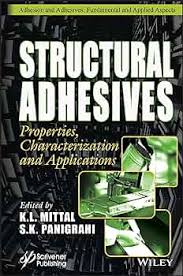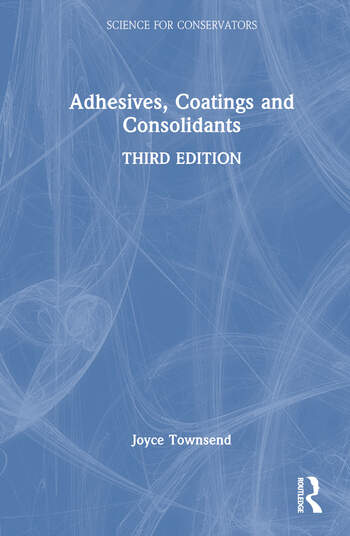Sustainable Cleaning in Electronics Production
It is critical to sustainably remove all manufacturing contaminants during printed circuit board assembly to ensure the proper adhesion of conformal coatings.

The demand for sophisticated electronics is increasing as the modern world pushes technology to the extreme. From smartphones to automated vehicles and high-tech avionics to life-critical medical devices, today’s printed circuit board assemblies (PCBAs) must function reliably.
For manufacturers, building these fault-free assemblies can be a challenge. Not only are the multifaceted boards packed with micro-components, but they must withstand demanding conditions over long periods of time. Whether it is extreme temperatures, high humidity, or vibration, the boards must have continued peak performance.
One strategy to ensure consistency and quality is to thoroughly clean PCBAs. These complex assemblies are exposed to contaminants in nearly every stage of production, including manufacture, assembly, shipping, and storage.
Contaminated PCBAs can lead to poor performance. Oils and flux residue can prevent proper adhesion of conformal coatings, while marking inks, adhesives, and other materials can cause PCB delamination, blistering, shorting, dendrite growth, and electrochemical migration. It is therefore critical to remove all leftover manufacturing contaminants and to do it in an environmentally sustainable way.

PCBAs are vulnerable to contamination that can prevent proper adhesion of conformal coatings.
Meeting Sustainability Goals
For today’s PCBA fabricators, environmental sustainability is moving to the forefront of their manufacturing processes. The most successful electronics manufacturers understand that environmental responsibility is an integral part of their business. To be sustainable, they are looking for ways to reduce energy and water use, lower emissions, and generate less waste. However, these efforts cannot come at the cost of the worker or the quality of the finished product.
Cleaning is one area where “green” goals can be met, but it can be challenging to find a solution that works effectively with so many options available. In addition to thorough cleaning, there are other factors to consider when cleaning small, complex PCBAs. With growing numbers of regulatory agencies across the globe increasing legislation and enforcing the laws more stridently in an effort to reduce any negative impact on workers or the planet, the cleaning method must also address regulatory, safety, and environmental sustainability requirements. Vapor degreasing is one cleaning method that meets this sustainable cleaning challenge.
Vapor degreasing is a safe, fast, and affordable cleaning method that is easy to integrate into existing production processes. The cleaning fluid used inside the vapor degreasing machine is engineered with characteristics such as high density, low surface tension, and low viscosity to wet every surface, getting in between and under tightly spaced and low-clearance components. It also offers high solvency, which allows it to clean PCBAs and dissolve stubborn flux residue.

Figure 1. Vapor degreasing is a safe, fast, and affordable cleaning method that is easy to integrate into existing production processes.
Vapor degreasing is a fast process, with cleaning cycles taking as little as 6-20 minutes per batch. In addition, the printed circuit boards come out of the vapor degreaser clean, dry, and immediately ready for packaging or conformal coating.
Unlike legacy cleaning fluids such as n-propyl bromide (nPB), trichloroethylene (TCE), and perchloroethylene (PERC), modern vapor degreasing fluids bring fewer air quality concerns. Most modern vapor degreasing cleaning fluids have a low global warming potential (GWP), which helps reduce greenhouse gas effects. The lower the GWP number, the more environmentally friendly the substance. Modern cleaning fluids typically have a GWP of 10 or less. By comparison, outdated solvents like hydrofluorocarbons (HFCs) and hydrochlorofluorocarbons (HCFCs) had average GWP ratings in the thousands.
Today’s modern cleaning fluids also typically have a zero ozone depleting potential (ODP), low volatile organic compound (VOC) content, and are not classified as hazardous air pollutants (HAPs). These properties ensure they meet strict regional air quality regulations and do not require National Emission Standards for Hazardous Air Pollutants (NESHAP) permits.
Thanks to their specially engineered characteristics, modern vapor degreasing fluids meet environmental directives, including U.S. Environmental Protection Agency (EPA) regulations and Europe’s REACH (Registration, Evaluation, Authorization and Restriction of Chemicals) legislation. They are also approved under the U.S. Significant New Alternatives Program (SNAP) and Toxic Substances Control Act (TSCA). Importantly, they offer improved eco-friendly properties without compromising cleaning performance.
Conserving Resources
Vapor degreasing uses no water, thereby conserving this non-renewable resource. Aqueous cleaning, an alternative to vapor degreasing, typically uses hundreds of gallons of water and requires significant energy to heat the water to cleaning temperature. It also requires energy to power the blowers or air knives needed to dry the PCBAs. This all adds to fossil fuel consumption.
By contrast, modern sustainable vapor degreasing fluids feature a low boiling point and heat of vaporization. This reduces the amount of energy needed to heat the fluid to an effective cleaning temperature. Parts leave the vapor degreaser completely dry, without the need of added heat or blown air. The result is reduced fossil fuel use, a lower total carbon emission, and less greenhouse gas output.
Modern vapor degreasing fluids can be recycled and reused for thousands of hours before they require refreshing or changing, reducing hazardous waste and disposal costs. There is also no wastewater produced, so specialty filtration, distillation, deionization, and osmosis prepping before disposal are not required.

Figure 2. Modern vapor degreasing fluids can be recycled and reused, reducing hazardous waste.
Enhanced Worker Safety
The modern cleaning fluids used inside a vapor degreaser have lower threshold limit values (TLVs) than the legacy solvents like nPB, making them safer for exposed workers. Expressed in parts-per-million (ppm), a TLV helps in evaluating the allowed level of worker exposure in the workplace over time. A cleaning fluid with a higher TLV number indicates a higher exposure threshold and is a safer option; lower threshold numbers indicate a greater exposure risk.
For example, several government agencies in the U.S. recommended 10-ppm minimum for exposure limits for nPB. Separately, California adopted a 5-ppm limit. In 2014, the American Conference of Governmental Industrial Hygienists (ACGI) lowered its recommended nPB exposure rating to just 0.1 ppm.
In 2020, the EPA reported that nPB presents an unreasonable risk to human health and should be restricted as an industrial cleaner. The EU’s regulations have prohibited its use since July 2020, and many experts are anticipating a complete EPA ban on nPB soon. By comparison, the TLV for many modern cleaning fluids is significantly better, at 200 ppm or more.
Futureproofing Sustainability
Protecting the planet and its people is fast becoming a priority for everyone, including those in electronics manufacturing. Sustainability is the future, but the fluids and processes used to achieve this goal must also meet stringent PCB cleaning requirements. Vapor degreasing, when used with environmentally progressive cleaning fluids, not only guarantees clean surfaces ready for coating, but it plays an important role in reaching green initiatives.
For manufacturers looking for help in selecting and using sustainable PCB cleaning fluids, it is essential to work with a partner that has sustainable cleaning fluid and vapor degreasing expertise. Based on the specific PCB components and the contaminants encountered, sustainable fluids and cleaning methods can be recommended that will not only meet specific cleaning needs today but will also comply with emerging, long-term local, national, and global environmental regulations well into the future.
For more information, visit www.microcare.com.
Note: Images courtesy of MicroCare, LLC.
Looking for a reprint of this article?
From high-res PDFs to custom plaques, order your copy today!








